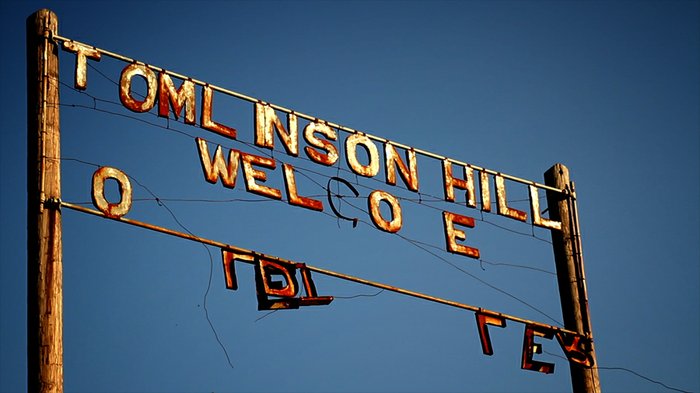By Chris Tomlinson
Tomlinson Hill is the stunning story of two families—one white, one black—who trace their roots to a slave plantation that bears their name.
My grandfather used to tell me that our family had owned slaves before the Civil War, and they loved us so much that they took our last name. The descendants of the former slaves, he said, still lived on the land where their ancestors had planted cotton, a place called Tomlinson Hill.
Forty years ago, he took special joy in telling me about our family history just as the Dallas public school district struggled to desegregate under court-ordered busing. For me, an eight-year-old in the early 1970s, the qualification that my ancestors were “good slaveholders” allowed me to imagine my ancestors as honorable and chivalric, possessed of all of the good qualities association with the antebellum South.
The fact that African Americans shared my family’s name and heritage also fascinated me. Who were they? Did they still grow cotton? Could we be friends, since their ancestors had loved my ancestors so much?
Of course, the idea that my family’s former slaves loved my family was a lie. There is no such thing as a good slaveholder, and while there may have been some affection, no one can truly love another who denies one his or her humanity. Yet this myth of the good slaveholder persists.
In 2007 I returned from 14 years as a war correspondent for The Associated Press to delve into my own family’s history of ethnic oppression and violence. I had still never visited the old Texas plantation, now a historical marker, along the Brazos River. But I wanted to tell the story of the sons of slaves and the sons of slaveholders, and whether we could live Martin Luther King Jr.’s dream of coming together in brotherhood.
The result of that journey is a book and a documentary film, both called Tomlinson Hill. The film focuses on the present day town of Marlin, where the descendants of slaves and slaveholders continue to work toward some form of reconciliation. The book, however, begins when the first Tomlinson arrives on the Hill in 1854 and ends when the last Tomlinson to live on the Hill dies in 2007.

Tomlinson Hill Welcome Sign. Image is in the public domain, via KPBS; courtesy of Chris Tomlinson/Lisa Kaselak and Fosforo Films.
Oliver Terry Tomlinson, a black man who had sharecropped for my family, was as proud of the Hill as anyone when he died in a car accident. But he was most proud of his son LaDainian Tomlinson, one of the greatest running backs in National Football League history. He had his family graciously agreed to share their stories with me.
Tomlinson Hill does not only tell the story of our two families. It’s an opportunity to compare the experiences of a white and a black family, side-by-side, through 160 years of American history. They provide an opportunity to tell the story of the United States and Texas as a whole.
James K. Tomlinson first moved his family and slaveholdings from Alabama to Texas in 1859 and bought the Hill from his brother-in-law, Churchill Jones. James was one of many slaveholders moving their holdings west in case of a Civil War. He and Churchill both opposed secession, believing that the U.S. legal system protected their property. But nevertheless, they were caught up in the secessionist wave and were soon found fighting on behalf of the rebel cause.
Following the war, my family was involved in the political struggle against civil rights laws, helping to draft and enforce Jim Crow laws that kept blacks from getting ahead. They built and funded schools for blacks, but made sure they only prepared black children for a life of farm work.
Milo and Phyllis Tomlinson took advantage of emancipation to buy their own land while continuing to work for the white Tomlinsons. Milo became a sharecropper and Phyllis worked as the white’s maid. While technically free, they were too poor to move and remained dependent on the white Tomlinsons for their own well-being.
Blacks worked hard to develop their own communities and wealth, but as they became less dependent on whites, the Ku Klux Klan rose again in the 1910s and 1920s. My great-grandfather and grandfather joined the KKK, as did millions of other white men throughout the country. The resilience of the black communities to isolate themselves to shield against an increasingly assertive white supremacist movement was one of the more interesting stories I discovered in my research.
After World War II, the civil rights movement brought an end to the harshest Jim Crow laws, but it also brought social upheaval. Divorce and drugs became larger problems both for U.S. society and the Tomlinson families.
CHRIS TOMLINSON is internationally recognized for his work as a fearless war correspondent and award-winning journalist, covering ethnic violence in Africa and the Middle East as well as America’s own ethnic strife. His latest book is Tomlinson Hill.
